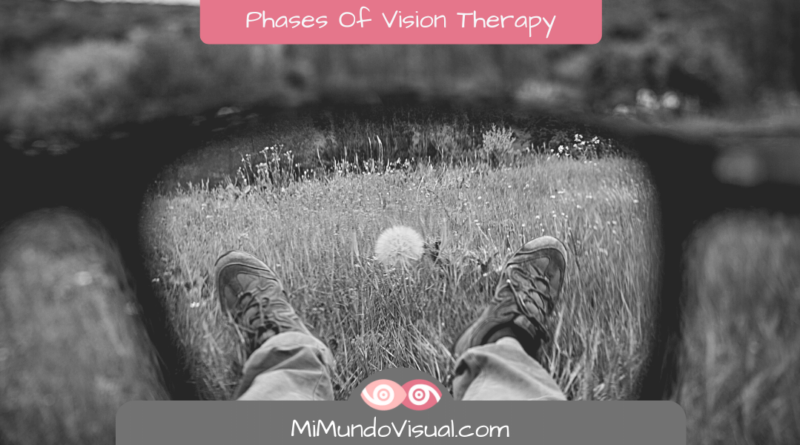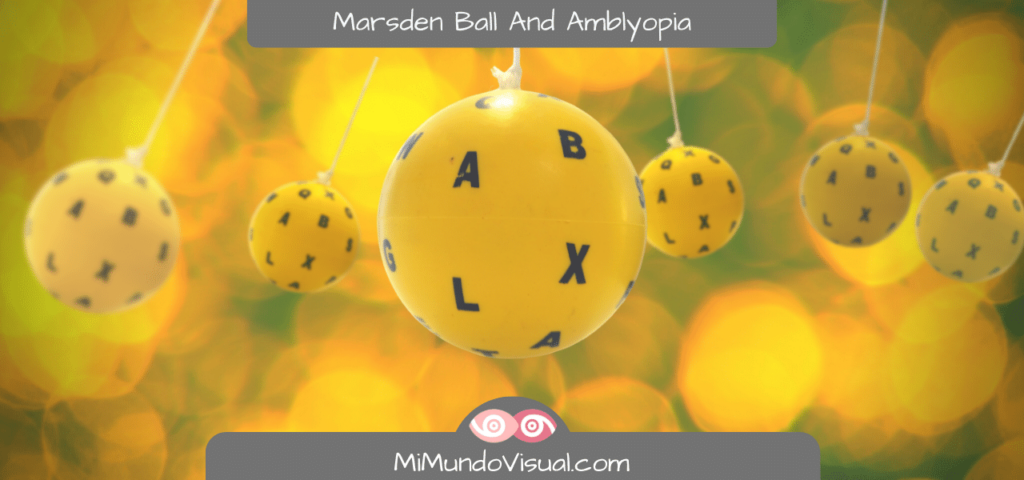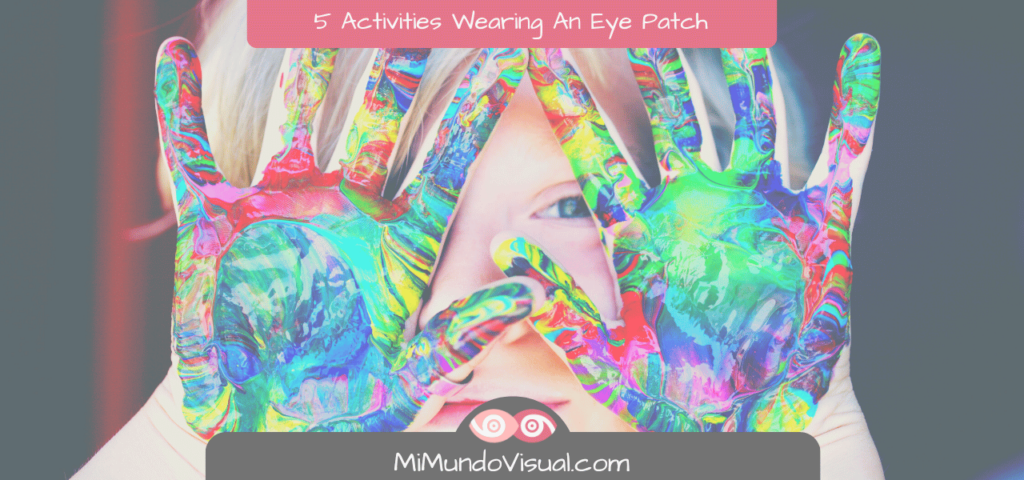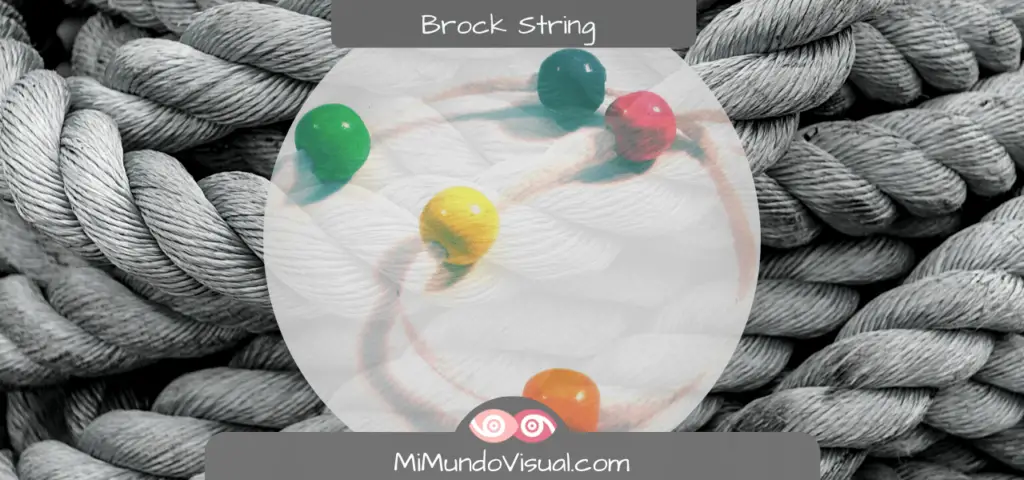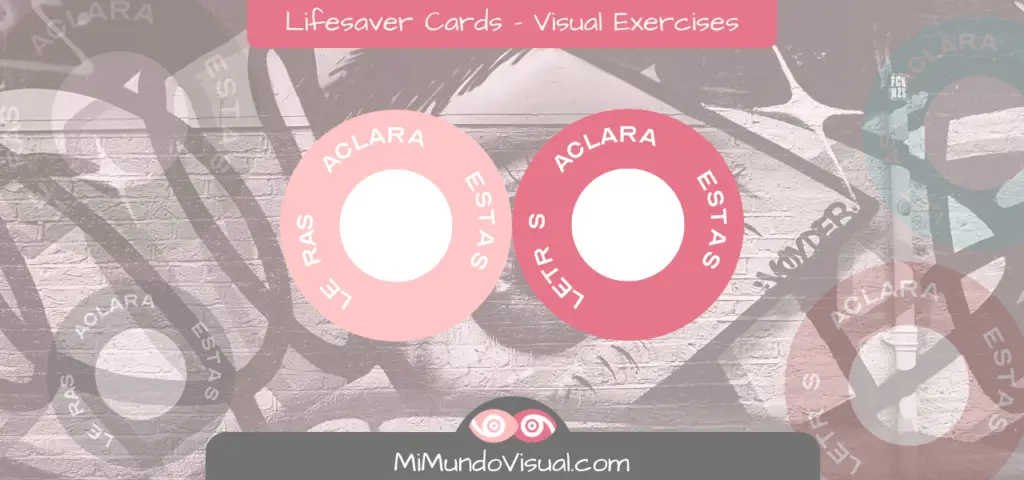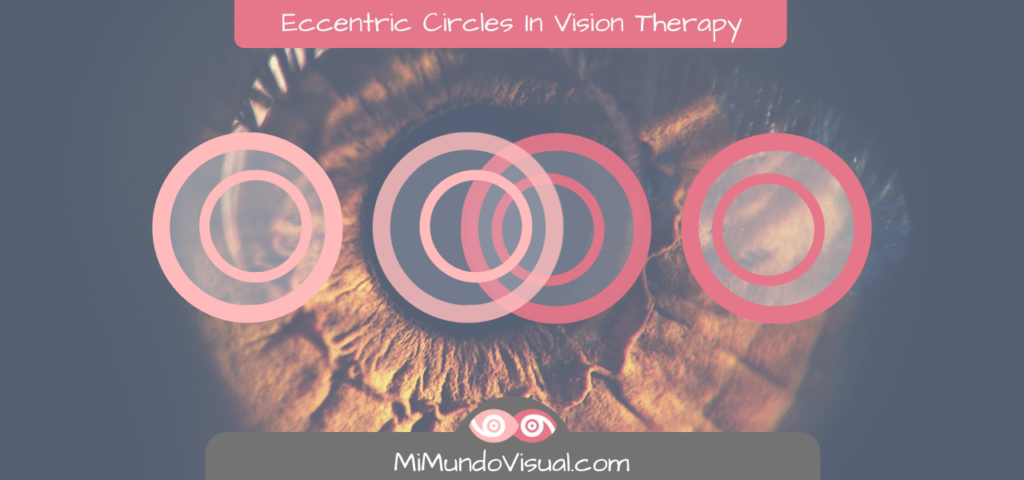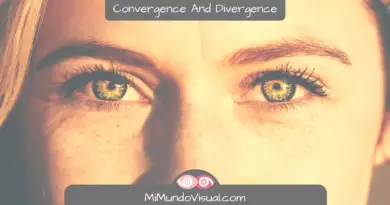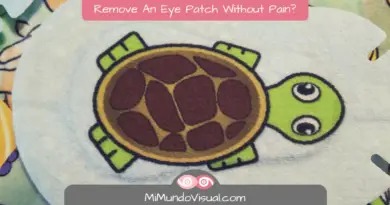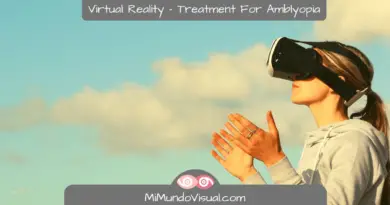Amblyopia Treatment – 4 Phases Of Vision Therapy
Table Of Contents
Today we will learn more about the different stages of vision therapy when treating Amblyopia. Since there are several ways to treat Amblyopia: some are active, like the ones we will discuss in this article, and others, on the other hand, are passive.
It is also possible to combine different treatments for Amblyopia. For example, a combination of optical prescriptions like glasses, contact lenses, prisms, occluder/obturator, and vision therapy.
Each case of Amblyopia is different and can be treated differently, so it is a good idea to visit our eye doctor or even several ophthalmologists or optometrists and listen to their opinions before committing to treatment.
Treating Amblyopia is usually a longer-term project. It will require a decent amount of determination to obtain the best results possible. Whether considering using Amblyopia Vision Therapy for yourself or your loved ones, it is always better to properly understand everything involved at every stage.
Suppose you have decided to start vision therapy. In that case, learning about the different phases or stages of vision therapy beforehand may be valuable!
Understanding the different stages of vision therapy for Amblyopia will allow us to know what we are working on at each step of the way while at the same time maintaining an overview of what is still to come.
We will not address which visual exercises are used in each stage, as the optometrist will be responsible for this. We want to avoid the idea that you can ‘do this without supervision.’
The optometrist will tell us what exercises are the most appropriate, depending on where we are in the process and our particular situation.
As parents of an Ambyopic child, we have found it very helpful to understand each of its phases and have a general understanding of what these stages aim to achieve. For this reason, we wanted to share this with you.
What Are The Phases Of Vision Therapy?
The first step will be to establish the optical compensation, which is done by prescribing glasses and/or contact lenses. This stands somewhat apart from the visual therapy side of things.
After that, an approximate path that works through different stages of vision therapy itself is taken. Do note that there may always be some differences in approach between different vision therapy professionals. However, the general structure is usually as follows:
Phase 1: Monocular Stage
Phase 2: Biocular Stage
Phase 3: Binocular Stage
The objectives that want to be achieved with these 3 phases are accommodation, ocular motility, anti-suppression, and binocularity.
However, when it comes to Amblyopia, a phase is added to these 3 phases. The book ‘Manual de Terapia Visual’ by Joaquín Vidal explains this very well.
Monocular training in the binocular field is included between the monocular phase and the biocular phase in treating Amblyopia.
Therefore, in vision therapy for Amblyopia, we have these 4 phases:
- Phase 1: Monocular Stage
- Phase 2: Monocular Fixation in Binocular Field
- Phase 3: Biocular Stage
- Phase 4: Binocular Stage
In the earliest phase, accommodation, ocular motility, shape recognition, and discrimination of stimuli monocularly will be worked on.
In the intermediate stages, monocular fixation in the binocular field and biocular therapy, and in the later stages, binocular and intersensory integration.
However, before starting vision therapy, the specialist will assess each individual’s current situation, i.e., in what condition their visual system is, and determine the treatment’s starting point.
Fase 1: Etapa Monocular
In the first phase of vision therapy, monocular exercises are performed, i.e., exercises with the amblyopic eye, to gradually match the abilities of the other eye, with the subsequent aim of merging the images of the two eyes.
During this stage, we start working on ocular motility (tracking, saccades, and fixation) and accommodation (amplitude and flexibility of focus), combined with peripheral exercises and eye-hand coordination to maintain fixation and improve visual acuity and shape recognition.
These skills are generally reduced in Amblyopia. In addition, these vision therapy exercises may be combined with passive techniques, such as occlusion of the non-amblyopic eye or penalization.
Monocular Motility (Gross Motility):
Monocular motility refers to the gross motor exercises of phase 1 of vision therapy. This monocular phase works on fixation, saccadic movements, and tracking movements.
Eye-hand coordination:
Eye-hand coordination, or oculomotor coordination, refers to the ability to simultaneously integrate information perceived by the eyes to guide hand movements.
Fixations, saccadic movements, and tracking movements:
Fixations, saccadic movements, and tracking movements are more affected in the amblyopic eye, and the aim of these first exercises is to smooth these movements, make them smoother, more precise, and without head movements.
Fixations:
Fixations refer to the short period in which we keep the vision sharp and clear to extract the information we are observing.
Saccadic movements:
Saccadic movements are rapid eye movements that allow us to quickly move our vision from one element to another and direct our gaze to ‘moving elements.’
The saccadic movement exercises are intended to work on the changes of fixation between two elements to achieve precision, smoothness, and an adequate rhythm.
Tracking Movements:
Tracking movements are slower eye movements that allow us to have a continuous and clear vision of the elements that are in motion.
Exercises are performed with a moving fixation stimulus to work on tracking movements, where the eyes have to follow the stimulus without moving the head.
For example, exercises with the Marsden Ball. If you want to know more about this curious ball:
As indicated in the ‘Manual of Visual Therapy‘ by Vidal, Joaquín, amblyopic people “usually have impaired gross motor and oculomotor skills and have often made a series of adaptations in their visual system that contribute to the loss of visual acuity.”
So in this first phase, eye movement control is trained, as it is possible to have:
- Loss of fixation during tracking and saccadic movements.
- Turning or head movements.
- Insufficient hand-eye coordination.
Monocular accommodation:
Monocular accommodation refers to exercises that are worked on during the first monocular phase of vision therapy. The goal is ‘monocular focusing,’ starting with amplitude and then continuing with the flexibility to develop control in the ability to accommodate.
Perceptual Discrimination and Shape Recognition:
These are exercises where we have to distinguish the element from its background. We can work on this through activities that specifically aim to let us find elements hidden in part or in a place with many distracting elements.
To do this, we can use books like ‘Where’s Wally’ or word search puzzles, activities that let us search for the differences between two nearly identical images, and games like Parquetry for shape recognition.
If you’d like to find more activities and games that you can do monocularly, you can get inspired here:
Phase 2: Monocular Fixation In Binocular Field (FMCB)
This second phase is the monocular fixation phase in the binocular field (FMCB), where one of the eyes sees the details, and the other sees the background of the same space.
This is a transitional stage between the monocular and the biocular phase, where both eyes are open. Still, only the amblyopic eye is centrally stimulated.
For example, red filter exercises are performed by placing a red filter to watch TV and a red filter on the goggle or a red filter patch.
In addition, red colors (orange, pink, or yellow) that are blocked by the red filter can also be used for writing, painting, or drawing. In this way, you can exercise your amblyopic eye while using both.
If you feel like using your red eyepatch, feel free to try these mazes with it:
Anaglyph glasses are also used. These are glasses (on many occasions, they are cardboard glasses) with a red filter for one eye (usually the amblyopic eye) and a green (or blue) filter for the other.
The purpose of these glasses is to be aware of the simultaneous perception with both eyes since each eye sees different things. We can become aware of this by covering one of the eyes and then the other. You’ll notice that each eye provides distinct information to the brain.
Phase 3: Biocular Stage
Phase 3 is the biocular stage, which is the ability to see information from both eyes, even if the images are in different places.
Its goal is to improve the ability to alternate focus switching in a non-fused situation.
In this third phase of vision therapy, each eye has its own field of vision. The image is composed of two seperate parts that do not have elements in common, and there is no fusion of the images.
Suppression ( which refers to the brain’s suppression of the image of the amblyopic eye by predominantly using the image provided by the dominant eye) is primarily worked on.
The biocular phase also aims to combine the simultaneous perception functions of the two eyes for subsequent binocularity and stereopsis.
This is a transitional stage between the monocular and binocular phases, where both eyes work together but separately. Each eye receives different stimuli.
According to Tello and Camero in their paper: Binocular vision: monocular stage, biocular stage, and binocular stage, treatment of each stage: “The simultaneous stimulation of the two optical channels activates the cortical receptive fields and ensures a permanent image formation under usual conditions to minimize the risk of amblyopia.”
Therefore, in the biocular phase, the aim is to enhance the amblyopic eye as much as possible and match the abilities of the other eye. For this purpose, exercises are performed in which we are aware of the fixation with both eyes and begin to have a certain degree of stereopsis.
A green filter will be added in the other eye in the biocular phase. In addition to the red filter in the amblyopic eye, a green and red filter is added to the television or computer screen while watching a movie or series.
There are also polarized filters, which are used similarly to anaglyphs but with polarized glasses and cards.
Regarding accommodation and ocular motility, activities similar to those of the monocular phase are performed during the biocular phase.
Phase 4: Binocular Stage
Phase 4 – Binocularity is the ability of the brain to fuse the information coming from both eyes into a single image.
The binocular stage is the phase of 3D vision or stereopsis, where brain fusion works to enable three-dimensional vision.
In the binocular phase, the aim is to integrate the amblyopic eye with the other eye, achieving binocularity, anti-suppression, and fusion of images.
And can distinguish three degrees in binocular vision:
A first degree of the binocular stage: Simultaneous vision.
Perception of information by both eyes simultaneously, the brain receives both images.
The second degree of the Binocular Stage:
Flat Fusion – The brain can unify the two images into one.
Third Degree of the Binocular Stage: Stereopsis
The unified image no longer looks flat but in relief, has volume, and is perceived with depth effect or 3D. SILO effect (small in, large out), perception of near objects, smaller and distant objects, larger.
A well-known exercise used at this stage is Brock’s String. It is used to treat Amblyopia and other visual anomalies, which have to work on anti-suppression, as is the case of strabismus, among others.
The Brock’s Cord is used to work both anti-suppression, as we have just indicated, as well as physiological diplopia, convergence, near point of convergence (PPC), ocular motility, and to improve fixation to be able to integrate the skills worked on.
Thanks to the fact that we can see two strings crossing in front of and behind Brock’s String balls, we are aware that we are using both eyes and doing it correctly. This is known as physiological diplopia anti-suppression.
At this stage, accommodation exercises are performed under binocular conditions to precisely integrate these two skills: accommodation and binocular vision.
Here, the same exercises are practiced as in the monocular phase but performed binocularly (with both eyes).
In addition, exercises are performed with LifeSaver Cards and Eccentric circles to work on accommodation, fusion, and vergence, which is essential in vision therapy that treats Amblyopia.
In this binocular stage, the same skills are worked on as in the previous phases, but with both eyes simultaneously, in addition to incorporating work with vergence and stereopsis.
First statically and gently, and then ending with exercises of more abrupt movements or jumps, combining it with body movements and eye movements.
At the end of these four phases, known as the intensive phase:
in which the skills of ocular motility, accommodation, binocularity, and anti-suppression have been worked on, a maintenance phase follows, which is necessary for the integration of all these learned skills.
Maintenance Phase
These sessions are shorter and more spaced in time, i.e., it is not necessary to do daily exercises, but rather one day a week, for example.
And we will work on integrating the skills learned in the previous phases, ocular motility, accommodation, and vergence, and learn to perform them automatically.
For The success of the vision therapy to be as effective as possible – as indicated by Bolo, Miriam – will depend on: the age of the person who performs the therapy, as well as attention, family dynamics, self-esteem, and above all, motivation, it is also essential to assess the prognosis and the collaboration of the person who is going to perform the therapy.
Therefore, it is important to treat each case as unique and adapt the therapy and phases to the person’s needs.
As we have indicated at the beginning, active vision therapy does not exclude other types of treatment or passive techniques, such as optical compensation, penalization, or occlusion, and these can be perfectly combined.
The ultimate goal is to achieve the most effective and stable result to treat Amblyopia or lazy eye.

